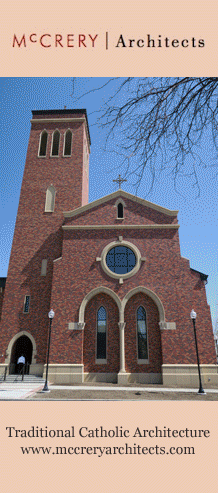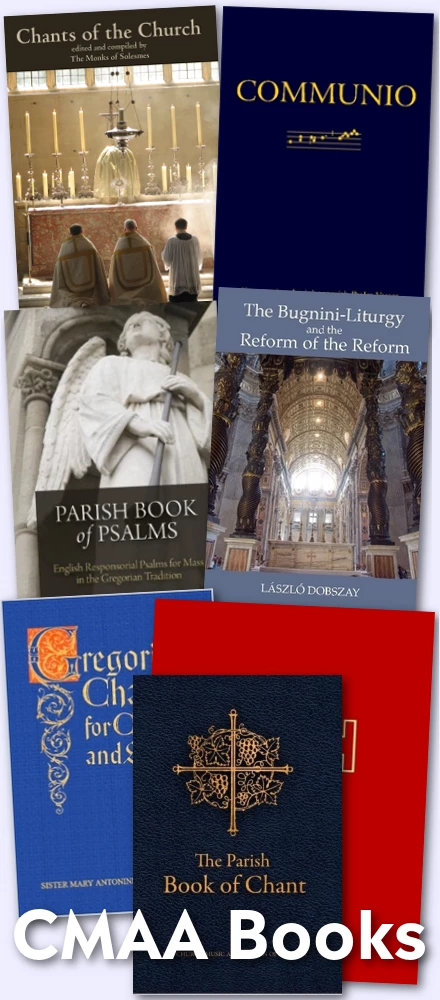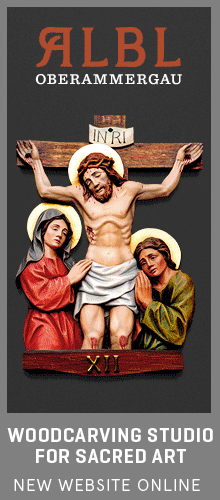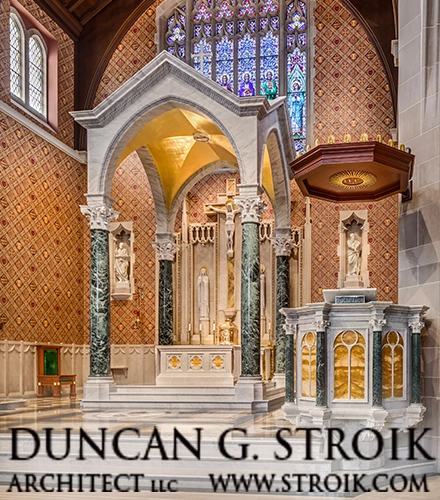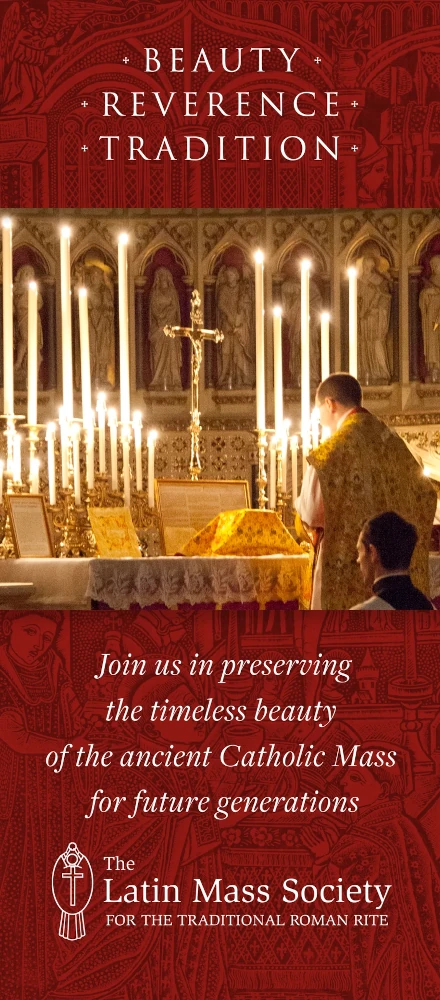Vatican City, Mar. 16, 2006 (CNA) - Today, the Vatican released a letter sent by Pope Benedict XVI to Cardinal Lubomyr Husar, major Archbishop of Lviv of the Ukrainians, recalling the forced fusion of Catholics into the Orthodox Church by the communist Soviet government in 1946.
The Pope’s message served to mark what he called "the sad events to which the cathedral of St. George at Leopoli was witness, in March of sixty years ago."
In the letter, which was dated February 22nd, the Feast of the Chair of St. Peter, the Holy Father recalled the infamous March 1946 date, during which "a group of prelates meeting in a pseudo-synod which took upon itself the right to represent the Church, made a serious attack against ecclesial unity.”
“Violence against those who remained faithful to the Bishop of Rome intensified,” he wrote, “giving rise to further suffering and forcing the Church to descend once again to the catacombs."
Despite this, the Pope expressed his thanks to God that "the Greek-Catholic Church did not disappear but continued to bear her own witness to the unity, sanctity catholicity and apostolicity of the Church of Christ."
The pontiff expressed hope that the anniversary would stimulate the Greek-Catholic community in Ukraine "to strengthen its intimate and committed bond with Peter's Successor."
He likewise emphasized how, "in the patient daily journey of faith, in communion with the successors of the Apostles, ... the Ukrainian Catholic community has managed to uphold Sacred Tradition in its integrity."
"In order”, the Pope went on, “for this precious heritage of 'Paradosis' (or Tradition) to survive in all its richness, it is important to guarantee the presence of the two great currents of the one Tradition - the Latin current and the Orthodox current.”
Each, he said, contains “the multiplicity of historical characteristics that the Ukraine has been able to express."
Benedict closed the letter by calling to mind what he called "the dual mission entrusted to the Greek-Catholic Church in full communion with Peter.”
“On the one hand,” he wrote, “her task is to ensure the oriental tradition remains visible in the Catholic Church, on the other, to favor the encounter of the traditions, bearing witness not only to their compatibility, but also to their profound unity in diversity."
Original Story: Catholic News Agency
Thursday, March 16, 2006
Pope praises Ukrainian-Catholic Church for upholding Sacred Tradition, communion with Seat of Peter
Shawn TribeMore recent articles:
“Hold Fast to the Traditions” - Guest Article by Mr Jay RattinoGregory DiPippo
Our thanks to Mr Jay Rattino for sharing with us this interesting article about the folk customs of Italian Catholics, and the efforts being made to preserve and revive them.The Italian Catholic communities throughout New Jersey and the surrounding areas are filled with long-standing traditions, and there are renewed efforts going on to revive the ...
The Ascension of the Lord 2025Gregory DiPippo
Men of Galilee, why do you wonder looking up to heaven? alleluia. As you have seen Him going into heaven, so shall He come, alleluia, alleluia, alleluia. Ps 46 All ye nations, clap your hands: shout unto God with the voice of joy. Glory be... Men of Galilee... (The Introit of the Ascension)The Ascension, 1495-98, by Pietro Perugino (1448-1523); pub...
How Medieval Christians Celebrated the Rogation Days (with a Dragon)Gregory DiPippo
The following description of the Rogation Processions comes from a canon of the cathedral of Siena named Oderico, who in the year 1213 wrote a detailed account of the liturgical texts and ceremonies used in his church. “Mindful of that promise of the Gospel, ‘Ask, and ye shall receive,’ (John 16, 24; from the Gospel of the Sunday which precedes t...
Why Louis Bouyer Is Delightful and Frustrating to ReadPeter Kwasniewski
One experience I think many of us have had with liturgical authors who wrote prior to the Council and/or the imposition of the Novus Ordo is that we find in their works so many wonderful insights, mingled with passages of excruciating naivete, baffling optimism about the possibilities of reform-in-continuity, strange flights of reformatory fancy, e...
The Crazy Liturgy of the Lesser Rogations in the Gallican RiteGregory DiPippo
The Lesser Rogations which we keep on the three days before the Ascension are actually older than the Greater Rogations kept on April 25th. They are called “lesser” because they were instituted in Gaul ca. 470 AD, by St Mamertus, the bishop of Vienne, and only adopted into the Roman Rite about 300 years later.Two leaves of the Farnese Hours, showin...
The Symbolism of Mary in Images of the Hospitality of AbrahamDavid Clayton
Here is a hymn to the Virgin Mary, a ‘Theotokion’ from the Canon of Sunday Orthros, tone 1, in the Byzantine Rite: Rejoice, O well-spring of grace! Rejoice, O ladder and door of heaven! Rejoice, O lampstand and golden jar, thou unquarried mountain, who for the world gavest birth unto Christ, the Bestower of life!And from the great hymn to the Virg...
Durandus on the Minor LitaniesGregory DiPippo
The following excerpts are taken from book VI, chapter 102 of William Durandus’ treatise on the Divine Offices. On the three days before the feast of the Lord’s Ascension, the Rogations, which are also called the Litanies: the Greek word “litania” in Latin is “supplication”, or “rogation” (from ‘rogare – to ask’), on which the Holy Church asks God...
The Fifth Sunday after Easter 2025Gregory DiPippo
Benedícite, gentes, Dóminum, Deum nostrum, et obaudíte vocem laudis ejus: qui posuit ánimam meam ad vitam, et non dedit commovéri pedes meos: benedictus Dóminus, qui non amóvit deprecatiónem meam et misericordiam suam a me, allelúja. (The Offertory of the Fifth Sunday after Easter.)Bless the Lord our God, ye nations: and harken to the voice of His ...
A History of the Popes Named Leo, Part 4: St Leo IX, and the Gregorian ReformGregory DiPippo
This is the fourth installment of a series on the thirteen papal namesakes of our new Holy Father Leo XIV; click these links to read part 1, part 2 and part 3. The church of Rome and the papacy have usually been late-comers to the great movements of reform and renewal in the Church, and have just as often been themselves in dire need of reform and ...
The Orate fratres and SuscipiatMichael P. Foley
Lost in Translation #126After praying the Suscipe Sancta Trinitas, the priest kisses the altar and turns clockwise towards the people, saying Orate fratres while opening and closing his hands. He completes the prayer as he continues his clockwise movement, finishing both at the same time. When he is done, the prayer Suscipiat is said. The Orat...


